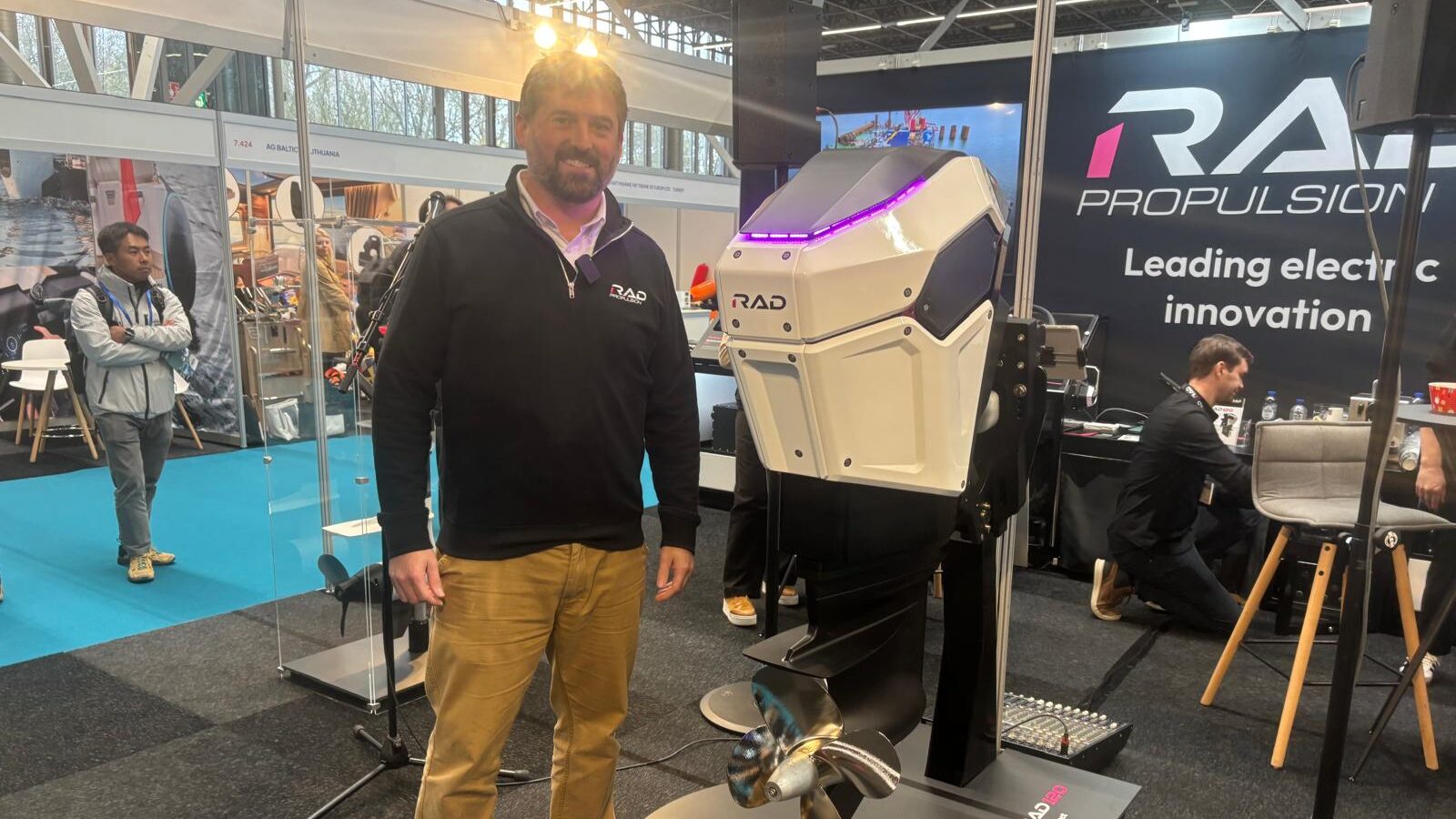RAD Propulsion has launched the RAD 120 – a new electric drive system developed in response to the increasing requirement for higher power marine propulsion – at Metstrade 2025.
The UK-based developer of electric marine propulsion systems positions the 120kW unit as the next step in its long-term product plan. As Dan Hook, CEO of RAD Propulsion, tells MIN: “When we first started RAD, we thought we really wanted something in the 9.9, 50 and 150 horsepower range. Those sorts of familiar sizes from the petrol world. So it’s great to be able to share the next step in our plan – our RAD 120.”
He describes the system as carrying over familiar elements from the earlier RAD 40. “This is a 120-kilowatt drive, which has the same features that work so well on the RAD 40 – including integrated 180-degree steering, closed-circuit cooling.”
Hook notes that major effort went into refining the acoustic and mechanical profile of the RAD 40. “We worked really hard on the 40 [launched at Metstrade in 2022] to minimise both underwater and above-water noise. Developing the electro-mechanical design, structural design and testing.”

The RAD 120 delivers 120kW of continuous power in a compact form, weighing 175kg. “We’ve gone even further with the RAD 120, and we’re now actually turning in a 17-inch propeller,” says Hook. “We’ve managed all of that within a nice compact package weighing 175 kilos. We’ve got some quite exciting partnerships we’re announcing in the new year.”
The system operates on 350–450V to remain compatible with RAD’s existing voltage architecture. Motor speeds reach 5,000 RPM with propeller speeds of about 3000 RPM. By accommodating large-blade-area propellers up to 17 inches in diameter, the system enables high-thrust operation across different vessel categories.
The system is available in long and extra-long shaft configurations. Integrated steering provides 180° movement – 90° to port and starboard – removing the need for external steering arrangements. The modular battery approach supports a range of configurations, with a recommended minimum capacity of 61kWh and a preferred minimum of 122kWh. Multiple linked batteries can deliver up to 244kWh of total capacity, and the company offers generator or range-extender interfaces for hybrid applications.
Reflecting on the market positioning for the RAD 120, Hook says he is making “a big commercial push” with the drive suited to workboats, harbourmaster fleets and defence vessels. “There’s a black version of the defence sector. We are pushing in America – we have a few American customers who want to go for a bigger one straight away, and the 40 was never quite big enough for them.” He adds that the US pontoon sector is also of interest.
In October 2025, RAD Propulsion expanded into the US with the opening of an office in Charleston, South Carolina.
In terms of global interest across RAD’s wider portfolio, Hook notes a shift in expected demand. “We’re getting loads and loads of enquiries from the Middle East, which I didn’t really expect when we started out. We thought it would be Europe-America. But there are loads going on in the Middle East, including eco-tourism set-ups in the region.”
Propeller options for the RAD 120 include custom designs, with five to 10 standard configurations planned in bronze or stainless steel. These cover three, four and five-bladed models in both left and right-handed variants. The unit is autonomy-ready, using the same RADBus control architecture as the RAD 40. It is fully fly-by-wire, and RAD provides an autonomy interface, control document and support.
The RAD 120 is designed to operate in temperatures from -20°C to +80°C, with seawater temperature capability from 0°C to +35°C. RAD Propulsion plans vessel trials for Q1 2026 at its UK facilities.
Speaking to MIN at Metstrade, Hook also highlights the firm’s early-stage work on a smaller drive concept, currently known as ‘RAD ?’. “We put a ‘RAD question mark’ next to that,” says Hook. “It is a thought-provoking exercise. We’ve been kind of concepting ‘what do people want from a smaller drive?’”
The post ‘The next step in our plan’: RAD Propulsion chief Dan Hook reveals RAD 120 electric drive appeared first on Marine Industry News.


Leave a Reply